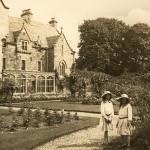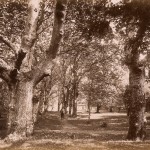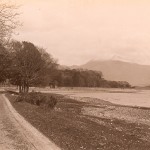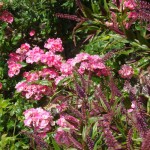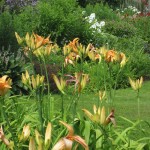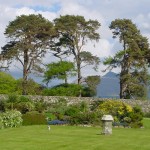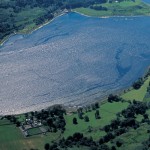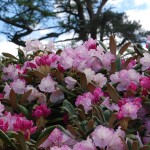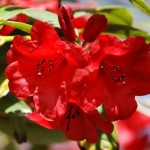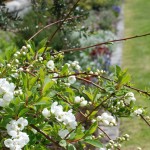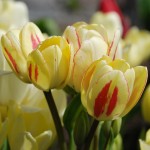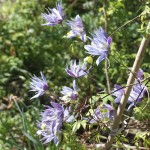A garden has existed at Ardchattan since the 13th century. Little is known of its early history and the garden you see today was mainly planted in the 20th century.
Its development has been influenced by the fashions of the time. The formal Rose beds in the front garden have given way to more flowing herbaceous and shrub borders, where as hay making used to take place either side of the drive, now it is planted with ornamental trees and shrubs. Here much of the grass is still left long, allowing first bulbs and later wild flowers to flourish.
The monastic origins still linger on in some of the names, such as the Monk’s Walk and the Prior’s Walk. A dip in the ground below the wild flower garden indicates the old Monk’s Pond, where they stored the fish they trapped in the salmon shott in the loch, just below the front garden. The pond is now dry, avoiding the midgy trap of still water.
The house (not open) overlooking the front garden dates from 1230, the central part facing the garden was rebuilt in the 15th century and would have been the Priory’s refectory with ‘calefactory’ or ‘warm chamber’ below. The west wing of the house was added by the Glasgow architect Charles Wilson in 1847/55.
Garden and Plants
The garden is situated on flat land a few feet above sea level, it has a free draining, gravelly soil with a neutral Ph. The rain fall is up to 80” a year and the gulf stream usually keeps the winters mild. The occasional severe frost takes its toll, but this is not a deterrent to experimenting with a wide range of plants, as growth is generally quick and often to spectacular heights in this moist climate.
The neutral soil enables a large variety of plants to be grown and thrive, although not especially suited to the Rhododendrons and Azaleas, so typical of Argyll. Using plants that suit the conditions is the garden’s philosophy.
Bulbs thrive, Roses do well so long as they are properly fed with some good manure, herbaceous plants like the openness of the front garden, Cornus and Sorbus trees enjoy the moist climate, Hydrangeas, Hoheria and Eucryphia flower from mid-summer well into autumn.
Waste material is composted where ever possible, the trees generate plenty of leaf mould and the farm provides manure. The garden is managed by one full time gardener.


